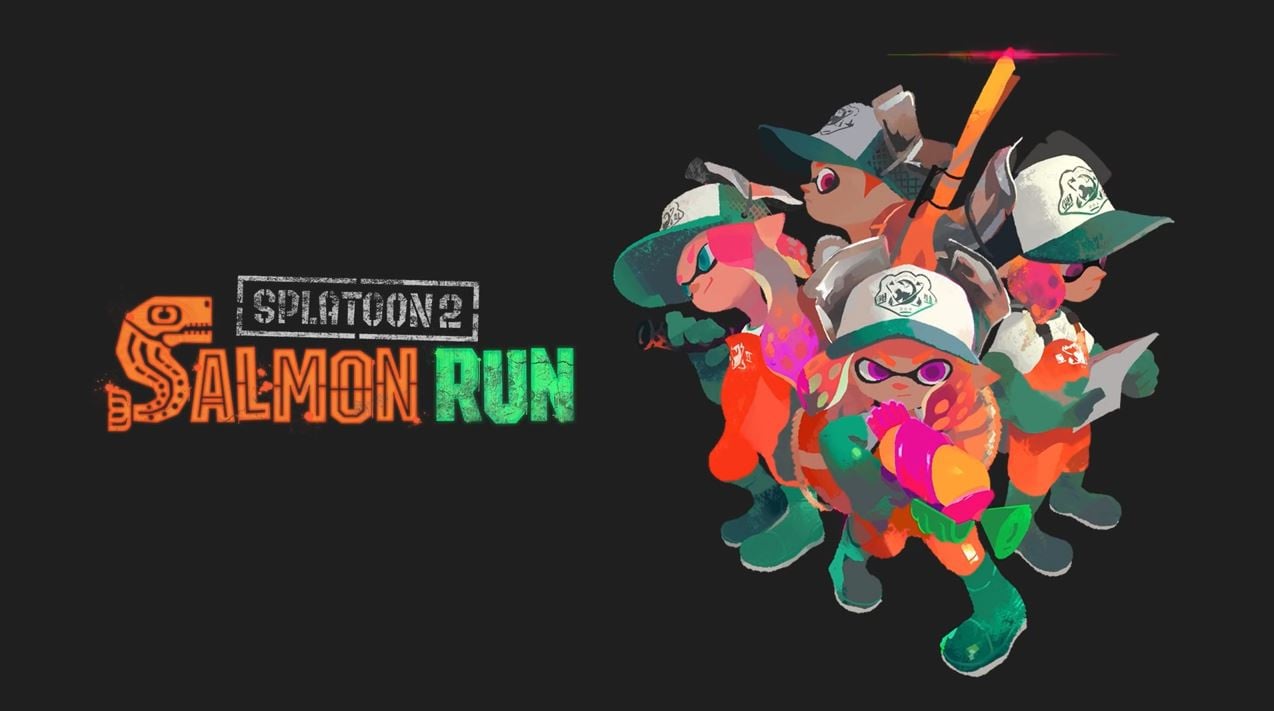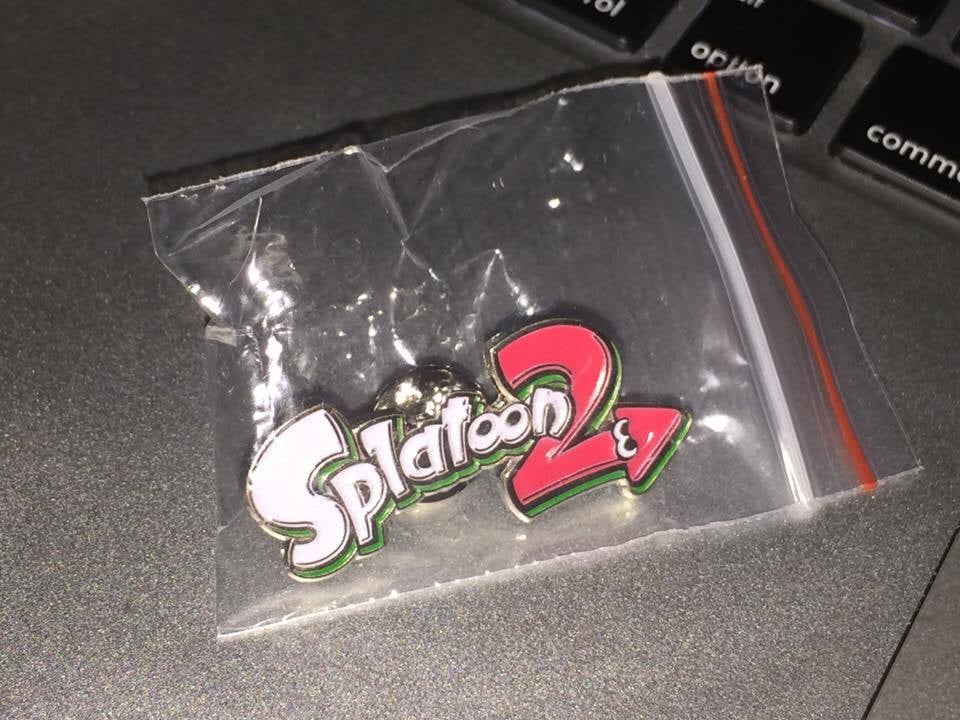
If you’ve played the Splatoon 2 Testfire, a timed, online trial mode where Nintendo Switch owners got their first hands-on with this anticipated shooter sequel, then you already know that Splatoon 2 looks and feels rather like the original game.
In fact, the ways in which Splatoon 2 differs are less in the aesthetics and more in its gameplay options. Perhaps the biggest among these is the endearingly titled “Salmon Run”, a tower defense or “horde mode” option, in which up to four players work together on an island surrounded by ink in order to fend off oncoming ink monsters attacking from all sides.
During our demo, we were handed 4 separate Switch units to take on a few Splatoon challenges. How likely you are to have this setup at home is another story, but for the purposes of our time with it this was undoubtedly the ideal set up; it will be fully online in the final game, too.
The task was relatively simple: pick your weapons, take 10 seconds to prep your island with some ink splatter, then defeat monsters who glide up to shore before they can defeat you. Each monster varies in shape and size, with some resembling tiny gnats and others taking up giant portions of your screen. Therein lies where the second part of this mode comes in: the golden eggs. Defeat the bigger ink monsters and they’ll drop important golden eggs. It’s up to your team to pick them up with “A” and carry them over to a centrally located basket on the island.
Communication aided in our quest to survive, as talking to others really did help with moving eggs and figuring out where the enemies were coming from. Obviously, this facet of the game is still up in the air when you’re not all in the same room, given Nintendo’s odd announced communication methods for Splatoon 2 (there'll be a smart device app). Mileage will certainly vary, so be prepared.
Continuing, the game plays in waves, and each wave carries with it a quota for how many golden eggs you need to salvage while also remaining alive. We needed to survive some three waves in total before claiming an overall victory. Not to brag, but we steamrolled the competition pretty easily.
That is, until we bumped things up from 5% difficulty all the way up to 100%., which you can easily adjust ahead of the match on a slider in the bottom left corner. Our Nintendo rep assured us we wouldn’t last 30 seconds at 100% difficulty. Another rep wagered Splatoon 2 pins if we could make it to 60 seconds. Obviously, it was a bet we took.
When we queued into our game this time around, we made sure to keep the high ground and make some paths. What we didn’t expect, however, was an absolute cacophony of ridiculous ink monsters to show themselves within moments of the start. We immediately found out that if you get hit and die, you turn into a ring buoy that you can move around the map slowly. If your teammate shoots at you, you can return back into the match.
We made it past the 30 second mark, but things were looking pretty bad. Half of our team died pretty quickly, and the two remaining fought valiantly to keep each other alive. Despite our best efforts, when the final Squid Kid fell we were 5 seconds short of a minute.
Splatoon 2’s Salmon Run mode is definitely shaping up to be a fun and solid edition to the original Splatoon formula. If you played Splatoon to death like this writer did, it’ll be well worth it to have a second main mode to jump back and forth from, and Salmon Run might definitely hold its own in that regard. Though communication methods seem murky, it ultimately turns out that fighting alongside other players is just as fun as fighting against them.
And in case you were wondering, yes, we did get those Splatoon 2 pins in the end. Consider it a badge of honor for a fallen squid squad.

Are you looking forward to this Salmon Run mode in Splatoon 2?
Comments 23
I hope this isn't the only new mode in the game! I'm surprised they didn't reveal a new Ranked Battle mode during the Splatoon 2 Tournament.
No local split screen, no buy. Sorry guys.
I had a blast playing this even though the difficulty was set at 5%. A little odd that you got the Splatoon 2 logo pin. They were handing those out just for playing Turf Wars. They're handing out Inkling Boy and Girl pins (just one or the other, unfortunately) for playing Salmon Run.
Why no local multiplayer...on the same Switch actually? My wife and I can't afford another.
@Whopper744 Cost of keeping the game running at a solid 60 frames man.
The Treehouse segment on this yesterday made really hyped for this mode.
Looks really intense and quite difficult. 80% was scary, can't imagine 100% let alone 200%.
This mode and single player have been the most tempting to me. I don't like having to deal with shooting other players in every mode. Teamwork and fighting the computer sounds fun to me.
So are there certainly no splitscreen modes?
@Indielink I guess I could see that. To us we'd live with 30 if it meant we could play it together though. Kinda stinks.
@Alikan I agree. Only split screen would appeal to me more. Love Splatoon but I'd rather be able to play with my wife, freinds, and family if I could instead of strangers online.
So hyped for this mode! Too bad about no split-screen. But if they get their account management across systems fixed, then I would FIND the money to get more Switches and copies of the game.
Hey everyone at nintendo life you have to check this out.
https://youtu.be/JiNDugRBUlM
So the people here are refusing to pick up an online competitive team-based shooter because it lacks an archaic offline mode of play. Well alright then, whatever floats your boat, but if that's enough to dissuade you from purchasing you probably weren't that interested to begin with.
I'd love a splitscreen option, I'd absolutely be happy to accept 720p 30 fps if that's needed for that to be possible. But I'll still buy it anyway, I loved the original too much to pass over this.
@Zebetite Except I am interested. I loved Splatoon 1, but barely played it due to it being an online heavy game. For someone with a limited budget, I'd rather buy switch games with meaty singleplayers, or multiplayer split screen. One of the switch's selling points is local multiplayer on the same device. That's why you get two controllers out of the box. I thought Nintendo would have added a better local mode by now for Splatoon. After seeing that the singleplayer is more of the same, the rotation is still only two maps at a time, and the salmon run isn't always playable online, I'm probably going to wait for a discount.
@Zebetite Also local multiplayer isn't archaic or uneeded. In fact, local multiplayer anywhere is how I most enjoy my switch.
@Whopper744 I agree with that. Local co-op is the best co-op!
Sucks that there is no "splatscreen". Won't deter me from getting the game, of course, but certainly we expect the option from the kings of couch co-op. Like 4 player in MK8, we can live with 30fps.
Kudos for the NL team.
Having seen how chaotic this mode is, I can understand why they opted not to go down the split screen route and require separate consoles...there is simply too much going on to be able to play effectively in such a mode with a much more limited range of view. Still, it is disappointing nonetheless, as locating more friends of mine with a Switch may be tricky.
@NinjaWaddleDee Where did you see that Salmon Run isn't always playable online?
6
@Indielink It's basically an event now, like splatfests. You can play offline if you want, but you need multiple switches.
@Whopper744 This
Tap here to load 23 comments
Leave A Comment
Hold on there, you need to login to post a comment...